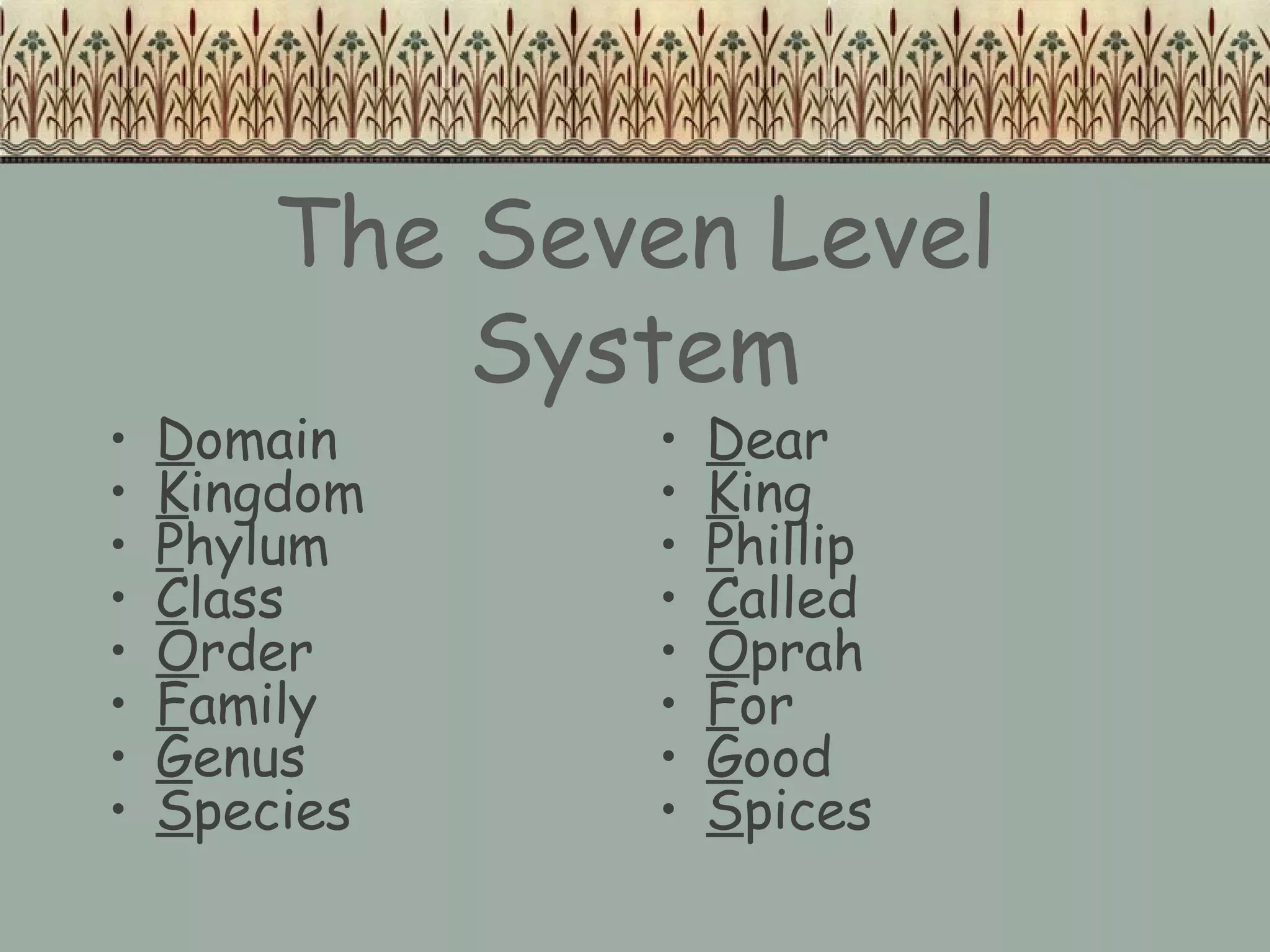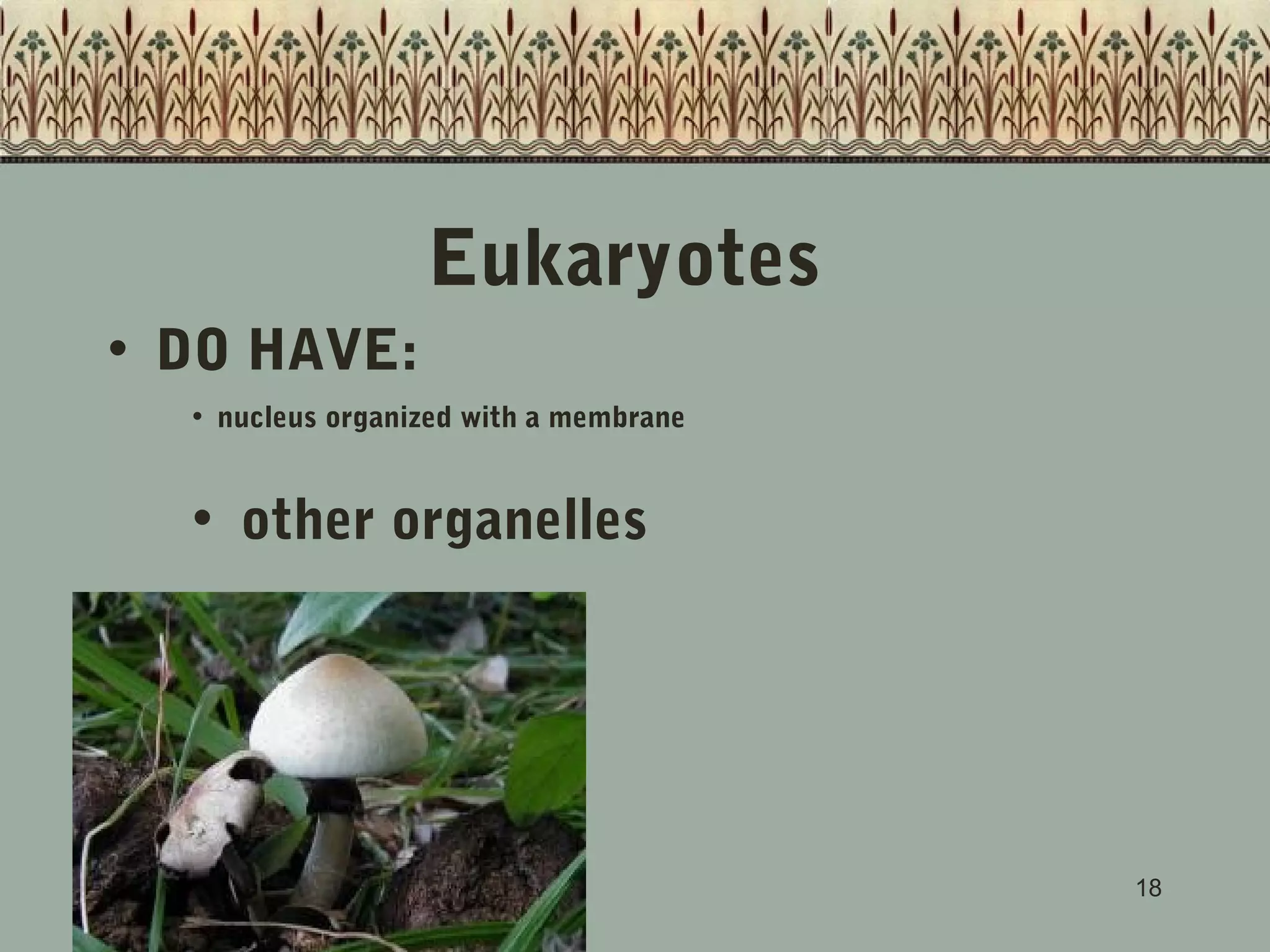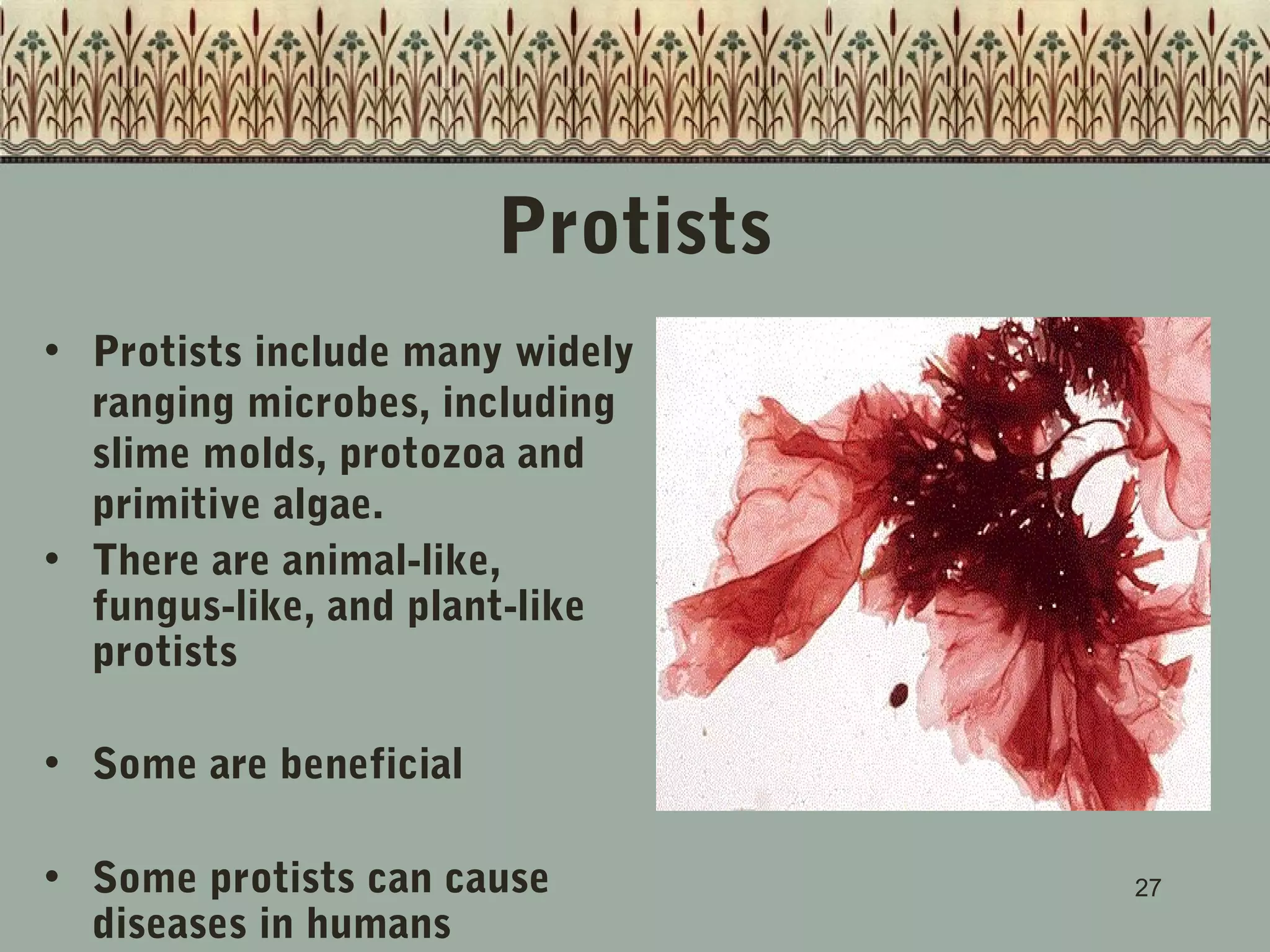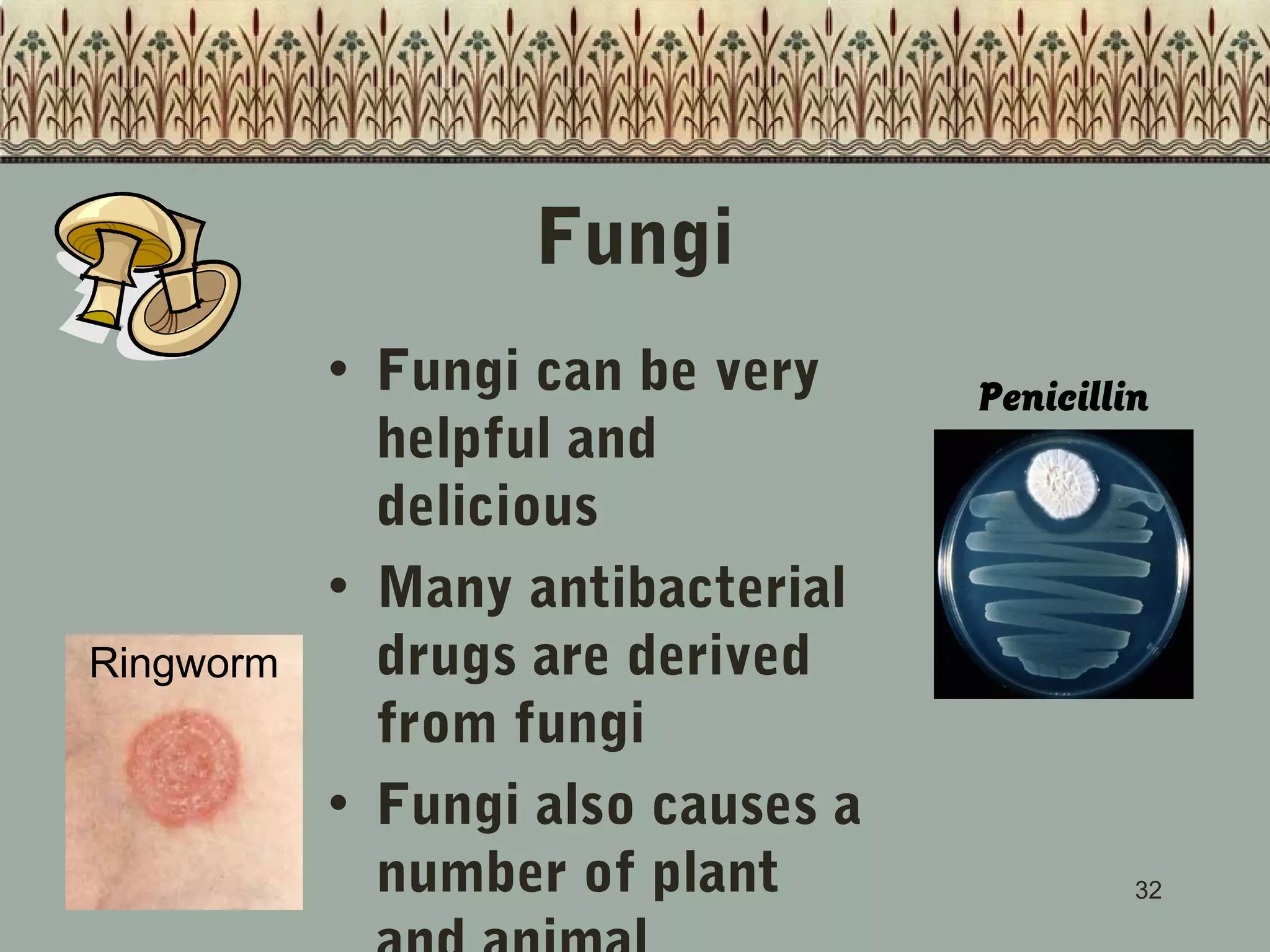This document provides an overview of taxonomy and the classification of living organisms. It explains that taxonomy is the scientific study of naming and grouping organisms based on similarities. A standard 7-level classification system was developed by Carolus Linnaeus, with domains, kingdoms, phyla, classes, orders, families, genera and species. Organisms are grouped into six kingdoms - Archaebacteria, Eubacteria, Protista, Fungi, Plantae, and Animalia - based on their cell structure, number of cells, and method of feeding. The document describes the defining characteristics of each kingdom.



































